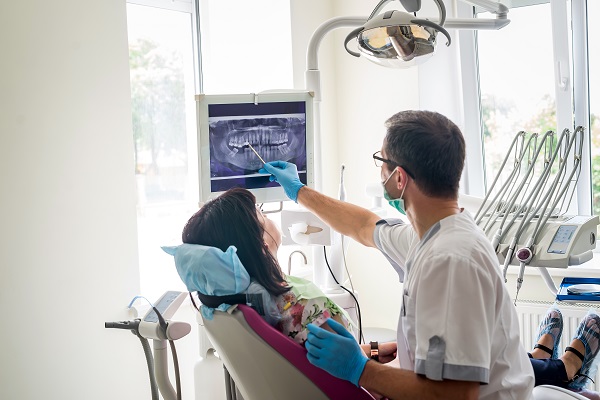What Is a Dental Implant Crown Procedure?
Patients who need to receive dental implants know the concerns that can come with that news. What does it mean? How will it work? As not many people outside the dental profession understand this procedure, it can cause uncertainty and anxiety in people who are told their mouth health depends on it. However, knowing what is involved in this process can reduce these concerns.
The process for receiving implants
The American Academy of Implant Dentistry states that 3 million individuals have had this surgery performed in the United States alone and that the number is increasing each year. Therefore, it is fairly common and highly effective. However, just because it is common does not mean most people know what to expect. To fully understand this dental procedure, it helps to be aware of the three-step process it entails.
1. The initial consultation
If someone needs implants, the first step in the process is to have an initial consultation with either a general dentist who has training in this area or prosthodontist. Here, the dentist explains the surgery in full, including each step, the recovery time, any dietary restrictions and the options available. It is also when the patient should ask any questions.
One of the first things done during the consultation is that X-rays of the mouth are taken to determine if there is enough jawbone for the procedure to take place. If there is, then the surgery can be completed right away. If not, an extra step will be needed, such as a bone graft, to build up the necessary amount of jawbone for the implant to fuse with.
2. The implant procedure
This is the main part of the process for implants, where the jawbone is drilled into to create an opening for the implant to sit. Once placed in the bone, the implant needs time to fully fuse and integrate with the natural bone so it stays in place and becomes a part of the mouth. In short, the implant acts as a new artificial root for a prosthetic tooth.
3. The crown placement
The final step is to place the crown. After the gums have healed and the implant has fused to the jaw, an abutment is placed over the implant. This is shaped like a mini tooth to connect the crown to the implant and acts as a screw that holds the two pieces together. The crown is then placed over this part to complete the process. On the surface, it will appear as a normal and natural tooth once all the steps are completed.
Conclusion
Dental procedures can be anxiety-inducing for many people, but knowing the different stages can help you mentally prepare for receiving implants. The surgery is commonly performed and not something for people to worry about, but fear of the unknown can cause stress. Having a thorough understanding of each step of the process can put people at ease before sitting in the dentist office and undergoing the surgery.
Request an appointment here: https://www.preferreddentalcenter.com or call Preferred Dental Center at (210) 822-8500 for an appointment in our San Antonio office.
Check out what others are saying about our services on Yelp: Read our Yelp reviews.
Recent Posts
How Can Veneers Improve My Smile?
Only a few people have naturally flawless smiles, which is why treatments like veneers exist. Dental veneers serve as a simple yet effective method of improving the appearance of the smile. Mostly produced from porcelain material, the thin shells are bonded to the front side of the teeth to cover imperfections.To make veneers, the dentist…
Who Is A Good Candidate For All-on-4?
If you have lost your teeth to disease or injury, you have multiple teeth restoration options like All-on-4® dental implants. Replacing lost teeth is essential for proper oral health and function. Since the jawbone, gums and teeth all function as a single system, missing teeth usually have a domino effect, causing further tooth loss, gum…
What Is Sedation Dentistry?
Sedation dentistry allows people who are concerned about potential pain and discomfort to relax during dental procedures. Dental anxiety is common, especially among those who have an unpleasant history with the dentist. Fortunately, there are different sedation dentistry options to give patients a comfortable experience in the dental office.Sedation dentistry involves the administration of a…
Invisalign For Bite Issues
Originally, Invisalign® was only designed to address crookedness, crowding or spacing issues in the teeth. However, over the years, the technology has greatly improved, allowing for advancements when it comes to what issues it can tackle. A common question is whether or not bite issues can be addressed with Invisalign® clear aligners. Each patient is…
Recent Posts
How Can Veneers Improve My Smile?
Only a few people have naturally flawless smiles, which is why treatments like veneers exist. Dental veneers serve as a simple yet effective method of improving the appearance of the smile. Mostly produced from porcelain material, the thin shells are bonded to the front side of the teeth to cover imperfections.To make veneers, the dentist…
Who Is A Good Candidate For All-on-4?
If you have lost your teeth to disease or injury, you have multiple teeth restoration options like All-on-4® dental implants. Replacing lost teeth is essential for proper oral health and function. Since the jawbone, gums and teeth all function as a single system, missing teeth usually have a domino effect, causing further tooth loss, gum…






